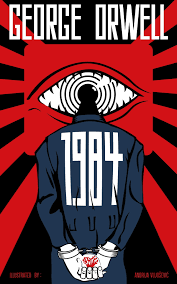This post describes telegram-writing mostly, but doing such would, of course, eventually to the discuss of modern writing. Why write about telegrams when writing about a family history? Well, the answer is pretty obvious. Anyone who has studied a little bit of history knows that primary sources1 are preferred over secondary sources; and that written sources are also preferred over oral sources.
Of course, a primary source is useless unless it provides some information about the topic under consideration. It is in this context that the telegrams in my mother’s scrapbook are of interest. It is because they tell us something about her friends, her life, her family, the places she lived – the when and where, and so on.
Before we dive into the telegrams that my family, specifically my mother, had received throughout the years, let’s briefly discuss what a telegram is and how it has evolved throughout the years.
What is a telegram?
Anyone born after 1977 probably doesn’t know what a telegram is, as the British Post Office abolished the service in 1977. A telegram is an electronic message that is printed and delivered to someone’s home or office. In the past, telegrams were sent by telegraph.
Telegrams were personally delivered to the door. People were wary of telegrams. They could be messages of joy, such as weddings, births and birthdays; however, they could also be messages of sorrow, such as the death of a soldier. For instance, during the II World War, the Air Ministry sent telegrams to notify families of deaths of soldiers.2
Evolution of telegram-writing
Ironically, the telegrams of the 1930s and 1940s seem to have represented ‘high technology’ at the time. This was perhaps the beginning of ‘digitalization’, although the telephone had been around for a long time. In other words, it was the start of the electrification of communication.
Considering the number of telegrams that my mother kept, this seems to imply that young people in the 1940s, like young people in the 2020s eighty years later, enjoy using the latest ‘technology’. In other words, it is a kind of misconception that ‘high technology’ is some kind of recent invention.
The point of telegrams was that you had to pay per word – which could be quite expensive (from a 2022 perspective, this seems absurd because of ‘free’ emails). But the restrictions on cost also had their advantages: people were not subjected to ‘information overload,’ which is often the case today.
Modern Writing
In other words, this technology forced people to compose short notes like ‘haikus’.3 Short forms of writing, such as ship logs, have always existed. Today, short-form writing is also important, such as SMS text messages on smartphones. SMS text messages are also subject to charges. That is, if they exceed a certain number of characters, then the cost will increase. However, it is not only a matter of cost; it is also about the span of concentration in the modern times.
In the ‘old days’, there was often no limit to the length of a written letter. A modern email, on the other hand, should not be overly long. The ‘modern man’ is pressed for time and will lose interest reading a long email, because he/she has a large number of emails in his/her inbox. In this context, I must confess to being a ‘communication criminal’. I try to limit my emails to 300 words, but according to one website, the ideal email length is between 50 and 125 words.4
1 Primary sources are documents, images, or artefacts that provide first-hand testimony or direct evidence concerning an historical topic under research investigation. https://guides.lib.uci.edu/primary_sources#:~:text=Primary%20sources%20are%20documents%2C%20images,with%20the%20event%20being%20researched.
2 https://www.iwm.org.uk/collections/item/object/1030009589
3 Haiku is a type of short form poetry originally from Japan.
4 https://www.campaignmonitor.com/blog/email-marketing/email-length-best-practices-for-email-mark



